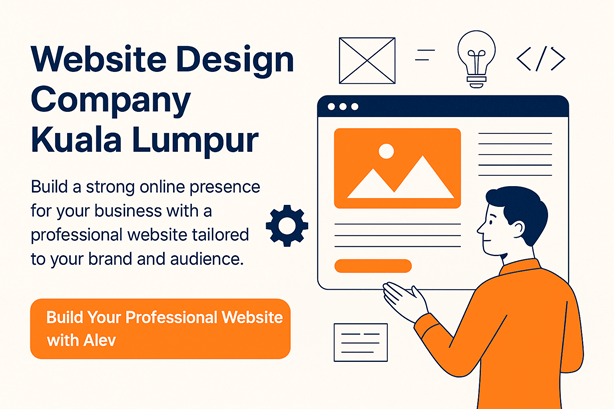You may be wondering how your packaging choices impact your brand’s identity and customer perception. In today’s competitive market, understanding the differences between minimalist and maximalist packaging styles can help you decide which approach aligns with your brand values and appeal to your target audience. Minimalist designs emphasize simplicity, allowing your product to shine, while maximalist styles focus on vibrancy and complexity to create a bold statement. This post will guide you through the advantages and challenges of each style, helping you make an informed decision for your packaging strategy.
The Psychological Impact of Packaging Choices
Packaging serves as the first point of contact between your product and potential customers, acting as a silent salesperson that influences perception and purchasing decisions. Various aspects of packaging, whether minimalist or maximalist, evoke feelings and associations that resonate deeply with consumers. Understanding these psychological impacts allows you to align your packaging design with the emotional response you want your brand to evoke.
The Mindset of Minimalism: Clean Lines and Calm
Minimalist packaging emphasizes simplicity, often characterized by clean lines and ample negative space. This design approach can evoke feelings of serenity, clarity, and focus, appealing to consumers who seek calm in their increasingly cluttered lives. Brands that adopt minimalism aim to communicate sophistication and quality without excess, allowing the product itself to shine through.
The Allure of Maximalism: Bold Statements and Emotional Connection
Maximalist packaging thrives on vibrant colors, intricate details, and dynamic patterns that tell a story and stimulate the senses. This style attracts consumers seeking excitement and emotional connection, creating a strong bond between the product and the buyer. By employing the principles of maximalism, brands can convey passion, creativity, and an unforgettable personality that resonates with a diverse audience.
The appeal of maximalist packaging lies in its capacity to forge deeper emotional connections with consumers. For example, brands like Anthropologie use vivid colors and elaborate designs that invite the customer into an experience rather than just a purchase. This approach often results in a sense of nostalgia and joy, helping you to not only stand out on the shelf but also to create loyal brand advocates. This emotional engagement can translate into higher sales and a memorable presence in a crowded marketplace.
The Brand Narrative: Consistency vs. Expression
Your brand narrative thrives on a balance between consistency and expression. Minimalist designs often lean into a clean, contemporary aesthetic that fosters brand trust through simplicity. They signal reliability and allow consumers to focus on the core message. In contrast, maximalist packaging unveils a more adventurous brand story filled with intricate designs and vivid colors that reflect creativity. To explore how these two extremes shape your brand narrative, check out this insightful article on Minimalist Vs Maximalist Packaging Design.
Minimalism’s Role in Building Trust and Reliability
Minimalist packaging fosters an atmosphere of trust through its uncluttered designs and straightforward messages. This simplicity resonates well with consumers seeking clarity and familiarity, allowing them to easily identify what your brand represents. Brands like Apple utilize minimalist packaging to project a sense of premium quality and reliability, reinforcing customer loyalty while providing an immediate understanding of the product’s purpose.
Maximalism’s Potential for Creativity and Differentiation
Maximalist packaging encourages bold design choices that set your product apart in a saturated marketplace. By embracing an eye-catching approach, you can tell a captivating story that reflects your brand’s unique personality. This style invites consumers to experience the product even before unboxing, creating a memorable impression that may lead to increased sales.
Maximalism not only allows for elaborate visuals but also opens avenues for storytelling through textures, colors, and patterns. Brands like Ben & Jerry’s exemplify this by using vibrant artwork and playful typography that engage customers’ imaginations. This approach can also accommodate seasonal or limited editions, giving your packaging continual freshness and appeal. Engaging designs can attract a plethora of customers, and by harnessing this creativity, you cultivate a recognizable and standout identity within your niche.
Cost Considerations: Analyzing Your Investment
Your choice between minimalist and maximalist packaging directly impacts your investment strategy. Minimalist designs, often characterized by simplicity and fewer materials, can reduce production costs and streamline logistics. This can lead to cost savings in large-scale production, allowing for reinvestment into other areas of your business. Analyzing your budget and long-term financial goals is necessary to determine which style aligns best with your overall strategy.
The Economies of Scale in Minimalist Design
Minimalist designs benefit from economies of scale by utilizing fewer materials and simpler production processes. This can lead to significant savings, especially when you scale up production. For instance, brands like Apple and Muji have leveraged simplicity to ensure that packaging is not only cost-effective but also leaves a lasting impression on consumers, reinforcing brand identity while keeping expenses in check.
The Upfront Costs vs. Long-Term Value of Maximalist Designs
Investing in maximalist packaging often means higher upfront costs due to intricate designs and premium materials. However, this style can foster a strong emotional connection with consumers, leading to brand loyalty and higher perceived value over time. Maximalist packaging can also encourage larger initial purchases as customers are drawn to its elaborate presentation, creating a unique brand experience that might justify the initial expenditure.
In the long run, maximalist designs can pay off in terms of brand recognition and customer loyalty. For example, companies like Lush and Tiffany & Co. expertly employ maximalism to enhance their storytelling through packaging, making it a part of their brand narrative. While the production and material costs may be higher, the resulting customer impressions and brand loyalty can translate to increased profits, making the investment worthwhile. Detailed market research and analysis can help you gauge whether this approach aligns with your long-term objectives and customer expectations.
Sustainability and Consumer Expectations
Today’s consumers are increasingly aligning their purchasing decisions with sustainability, making eco-conscious packaging a priority. You need to consider how your packaging reflects sustainability and meets consumer expectations. Your choice between minimalist and maximalist packaging can significantly impact your brand’s perception, as eco-friendly materials and practices gain traction among shoppers. In an age where every product is scrutinized for its environmental impact, aligning your packaging style with your brand values can foster loyalty and attract an audience that prioritizes sustainability.
Eco-Friendly Minimalism: Less is More
Minimalist packaging naturally leans towards sustainability, focusing on reducing waste and using fewer materials. When you embrace a minimalist approach, your packaging can utilize recyclable or biodegradable materials, streamlining production and distribution processes. A striking example is the use of simple kraft paper for boxes that minimizes ink usage, ultimately showcasing a raw, organic appeal. This approach not only conveys your commitment to the environment but also resonates with consumers seeking authenticity in a world overloaded with excess.
Maximalist Innovations: Can Excess Be Sustainable?
Maximalism often conjures images of ornate designs, excessive materials, and elaborate concepts, yet it can also embrace sustainable practices. You can incorporate innovative materials in your packaging transformation, transforming traditional excess into responsible choices. However, this requires creativity and a critical examination of your methods to ensure the overall impact remains environmentally friendly.
Maximalist packaging can be sustainable by utilizing upcycled materials, incorporating innovative technologies such as bioplastics, or applying multifunctional designs that encourage reuse. For instance, brands like Coca-Cola have begun to utilize plant-based plastics and reduce their overall packaging footprint while maintaining vibrant and eye-catching designs. Utilizing such advances can allow you to merge artistic flair with responsible practices, enabling your brand to captivate consumers who appreciate bold aesthetics without sacrificing their ethical values. The key lies in balancing visual appeal with eco-conscientiousness, creating a packaging solution that serves dual purposes: eye-catching while promoting sustainability.
The Future of Packaging: Trends and Predictions
Looking ahead, the packaging landscape will continue to evolve, driven by innovations in materials, technology, and consumer values. With a growing emphasis on sustainability, brands will seek to adopt eco-friendly materials while maintaining aesthetic appeal, combining visual impact with environmental responsibility. Additionally, advances in technology could transform how packaging interacts with consumers, integrating smart technology for enhanced engagement. As the market shifts, agility in adapting to these trends will be vital for brands aiming to remain relevant and competitive.
The Rise of Hybrid Approaches: Blending Styles for Effect
Hybrid packaging approaches are gaining traction as brands experiment with elements from both minimalist and maximalist styles. By combining clean lines and bold graphics, you can create standout packaging that catches the eye while ensuring a clear message. This blending of styles allows for distinct brand expression while also resonating with consumers who appreciate both simplicity and creativity. An effective hybrid design can elevate your product on shelves while connecting with the target audience’s aesthetic preferences.
Anticipating Consumer Shifts: What Comes Next?
Consumer preferences are shifting rapidly, influenced by broader social and environmental considerations. The trend towards personalized experiences is expected to grow, with packaging serving as a canvas for individual expression. As sustainability becomes an even stronger market driver, you may notice an increased demand for recyclable, reusable, or biodegradable options. Brands that anticipate these changes and align their packaging strategies accordingly will likely see enhanced loyalty and engagement from increasingly discerning consumers.
As you look toward the future, consider how features like customization, interactivity, and a commitment to sustainability can shape consumer perceptions. Brands that harness data analytics to understand customer preferences better can create targeted packaging solutions. By prioritizing eco-friendly materials and innovative designs, you not only meet consumer expectations but also differentiate your brand in an increasingly crowded marketplace. The future of packaging will not simply be about aesthetics; it will be a fusion of functionality, technology, and conscious consumerism that paints a larger picture of your brand’s values and ethos.
Final Words
So, as you consider the minimalist versus maximalist packaging styles, think about your brand’s identity and target audience. Minimalist packaging may evoke elegance and simplicity, appealing to consumers who appreciate clarity, while maximalist designs can tell a vibrant story and create a memorable experience. Your choice should align with your brand values and the message you want to convey. Ultimately, the right packaging style will enhance your product’s appeal and strengthen your connection with consumers, leading to greater brand loyalty.







